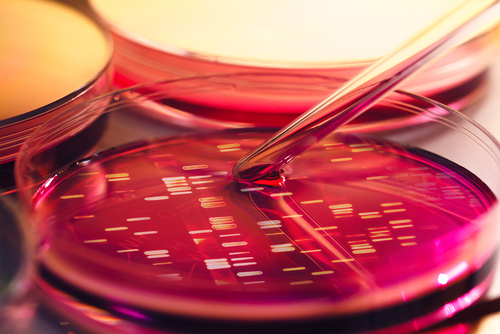Researchers have defined a molecular phenotyping method capable of predicting the chance of recurrence of both non-invasive and invasive breast cancer in patients diagnosed with ductal carcinoma in situ (DCIS). The researchers believe that molecular phenotyping, characterized by HER2 testing, could prevent overtreatment of DCIS patients.
DCIS is the most common type of non-invasive breast cancer. While there are successful treatment options for DCIS patients, including breast-conserving surgery (BCS), mastectomy, and radiotherapy, DCIS patients typically exhibit a high rate of recurrence of both non-invasive and invasive breast cancer. As a result, women sometimes receive radical treatment methods to prevent recurrence, leaving a subset of patients at risk for overtreatment.
Prior to this study, clinicians utilized estrogen receptor (ER) as a predictive marker for recurrence, which admittedly offered limited predictive power. HER2 is another predictive marker, however its prognostic significance remains controversial and therefore is not used by clinicians.
The goal of this study was to analyze the ability of molecular phenotyping to accurately predict the chance of recurrence and, therefore, better dictate individualized treatment plans. A total of 314 patients were subdivided into four molecular phenotype groups based on their ER, HER2, and progesterone (PR) status: Luminal A (ER or PR+, HER2-), Luminal B (ER or PR+, HER2+), HER2 type (ER and PR -, HER2+), and triple negative (ER, PR, HER2 -).
Overall, the molecular phenotype with the least rate of recurrence was Luminal A. In fact, Luminal A patients had only a 7.6% general recurrence rate after both 5 and 10 years and only 1.3% invasive recurrence rate after both 5 and 10 years. On the other hand, HER2 molecular phenotype exhibited the highest rate of recurrence, as compared to Luminal A, with a 48% recurrence rate after ten years. This was closely followed by Luminal B subtype with an overall recurrence rate of 46% after ten years. The triple negative molecular phenotype, while including less patients, still resulted in a higher rate of recurrence, as compared to Luminal A, with 34% recurrence after 10 years. Therefore, the researchers concluded that molecular phenotyping, HER2 phenotype in particular, is useful in the prediction of disease recurrence in DCIS patients.
Using a univariate analysis of independent predictors, researchers concluded that DCIS patients that underwent mastectomy were less likely to exhibit recurrence than those who chose BCS. Furthermore, patients diagnosed with ‘high-grade’ disease were also more likely to exhibit recurrence. Factors that failed to predict recurrence in this analysis were age, level of necrosis, and tumor size/type.
In summary, researchers have defined a procedure by which clinicians are able to classify patients into one of each of the four molecular phenotype groups and use this information to accurately design an appropriate treatment plan for patients on an individualized level. The team suggests that while HER2 status is not commonly measured in DCIS patients, it may be beneficial to assess HER2 status as a means to predict recurrence of disease and aid in proper treatment of patients.

